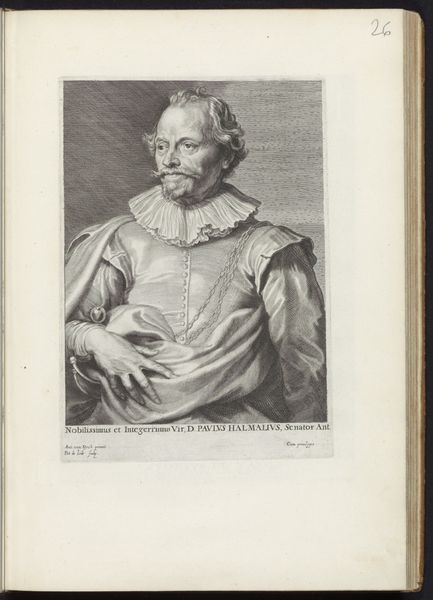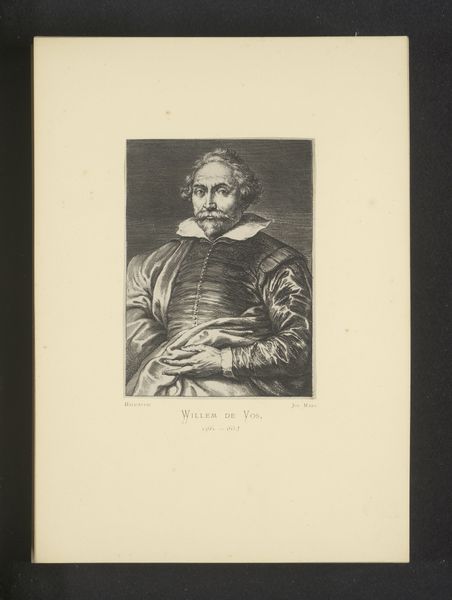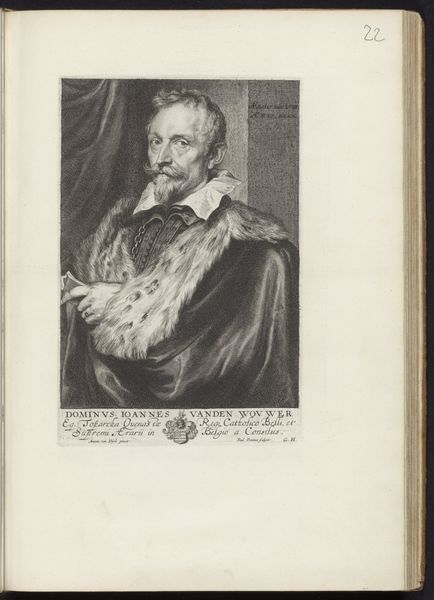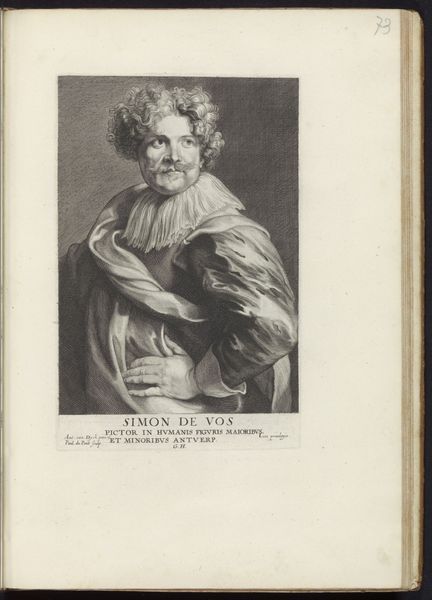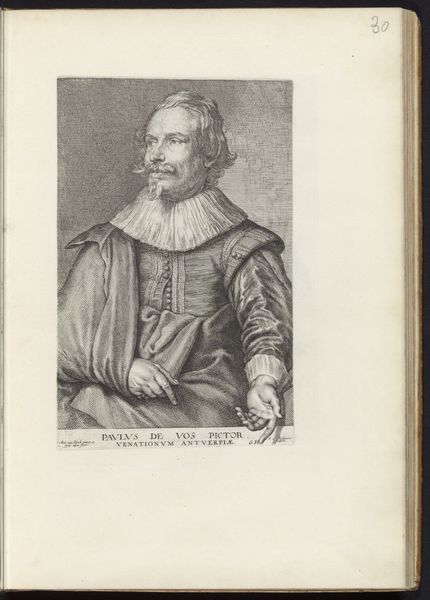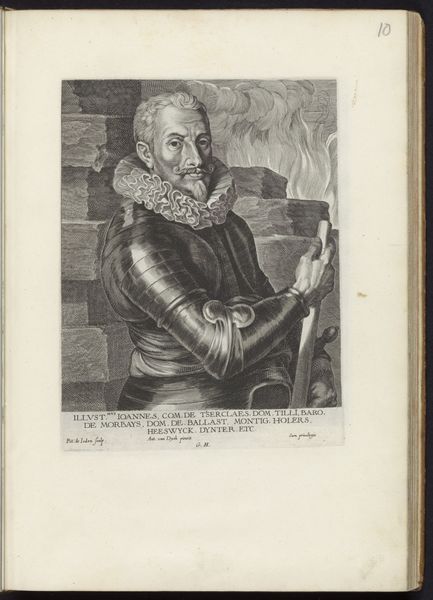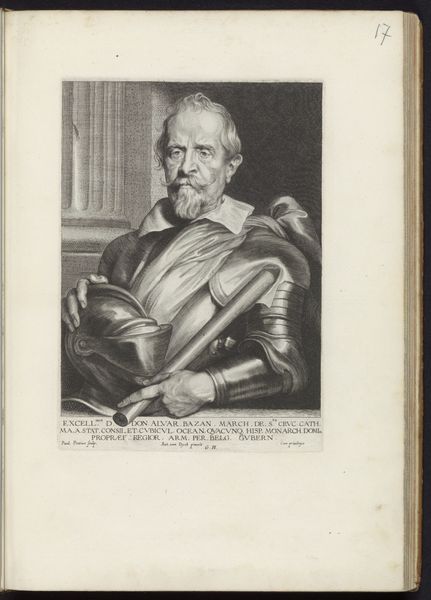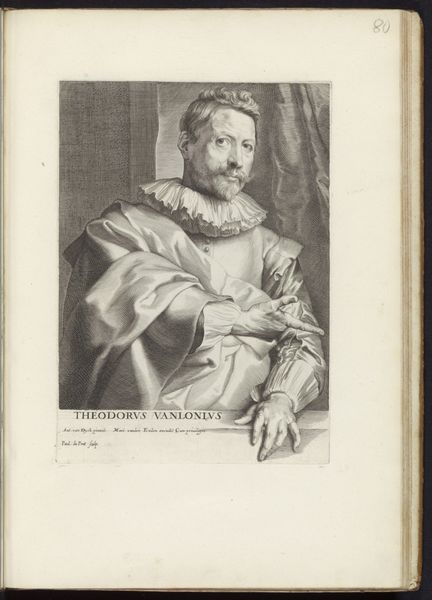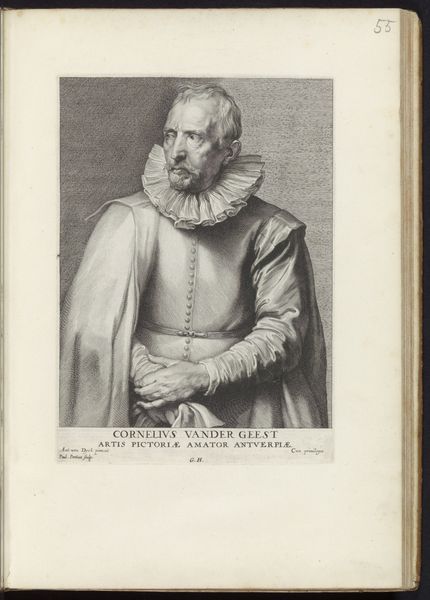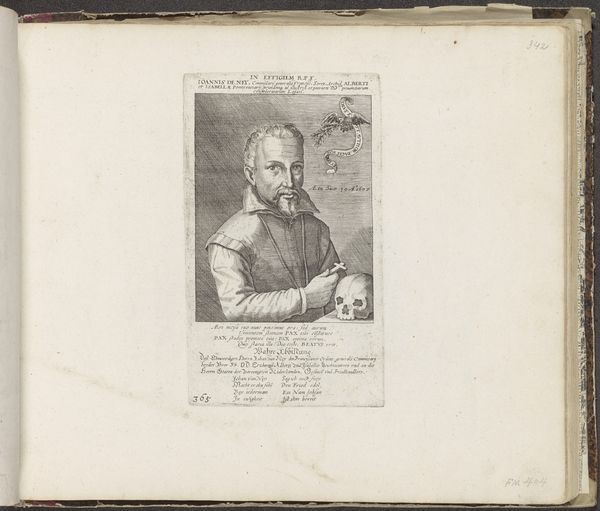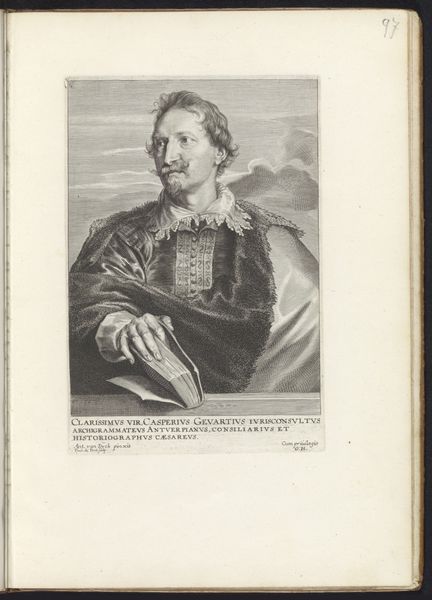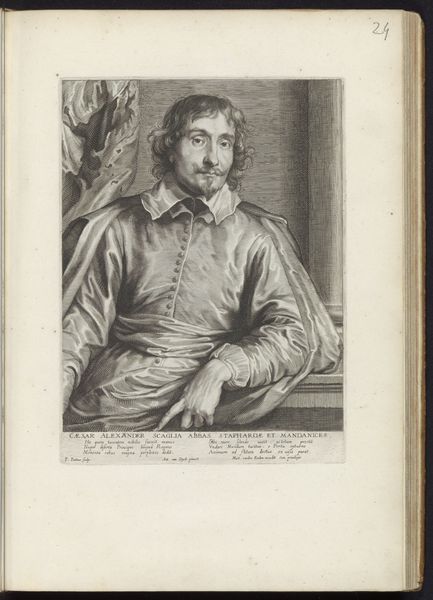
print, engraving
#
portrait
#
baroque
#
dutch-golden-age
# print
#
figuration
#
line
#
engraving
Dimensions: height 243 mm, width 156 mm
Copyright: Rijks Museum: Open Domain
Editor: So this is "Portret van de schilder Willem de Vos," or Portrait of the painter Willem de Vos, attributed to Anthony van Dyck, potentially created between 1630 and 1646. It's an engraving. I’m struck by the sitter’s direct gaze and confident posture. How would you interpret this portrait in light of its historical context? Curator: This engraving is more than just a likeness; it's a carefully constructed representation embedded within the social and artistic landscape of the Dutch Golden Age. Think about it – who commissioned this print, and what purpose did it serve? It probably wasn't De Vos himself but possibly an organisation for distribution to members or other art fans. Editor: That’s a good point. I hadn’t considered the context of its creation beyond Van Dyck’s studio. So this portrait might serve a promotional purpose, almost like an early form of artist branding? Curator: Precisely! The inscription proclaims him a painter of "human figures." And notice his clothing. Is it extravagant? No, it’s rather sober, but that neatly pleated collar communicates social and financial status to his peers, his patron and a public audience. How do these details shape our perception of De Vos and his position within the artistic community? Editor: So it’s carefully balancing a need to project success without seeming overly ostentatious. I guess what I’m getting at is… are portraits like these helping create and cement a visual idea of “the artist” in society at that time? Curator: Absolutely. Prints circulated widely and disseminated these carefully constructed images, impacting how artists were perceived and valued. This is tied to economic conditions of the time, with artist’s work fetching a price from a newly emerged middle class eager to spend its wealth on cultural objects and pursuits. The democratizing aspect of printmaking is very important to art as a social enterprise. Does knowing this perhaps change how you initially viewed this work? Editor: It does. I see it now less as a simple depiction of an individual and more as a statement about the role of the artist in 17th-century society. Thank you.
Comments
No comments
Be the first to comment and join the conversation on the ultimate creative platform.
